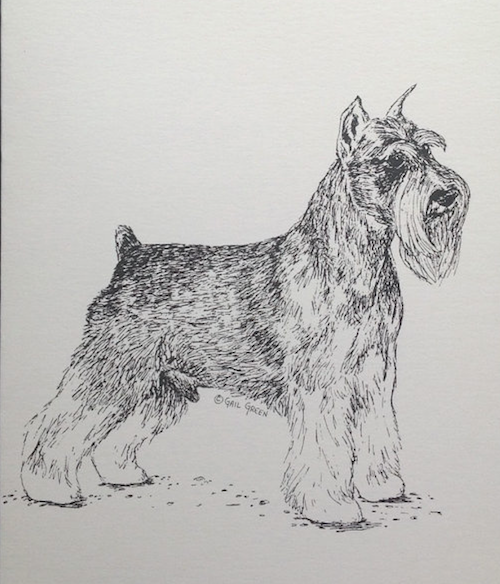
Is your perception of a “medium boned” dog the same as ours?
Like the word, “medium,” determining the correct distance between a dog’s last rib and the forward end of its pelvis can feel subjective to the person learning about this area of a dog. Don’t get us wrong, there is a word for this region, it’s called the “coupling,” and it’s the muscular area of a dog’s lumbar area, flank, and abdominal area. Looking over the dog’s back from above, some people call this area the “length of loin.”
Learning about this part of a dog to be challenging to master for a couple of reasons. First, a well muscled dog can make finding the tip of the pelvis difficult. Secondly, two dogs standing side by side can both measure out to be the exact same length even though one dog looks longer than the other one. How can this be?
It comes down to the distance between that last rib and the pelvis – the coupling. A “short coupled” dog has less space in that area, and conversely, the “long coupled” dog has more.
Lexicon can complicate things when people use different terms. Some fanciers refer to a “long coupled” dog as “loosely coupled,” and to the “short coupled” dog as “strongly” or “well coupled.” It helps to be on the same page when discussing a dog over the phone or through e-mail. It also helps to know your breed standard. What is considered appropriate coupling varies by breed.
Why does any of this matter, anyway?
We are tempted to say that one reason it matters is “cosmetic” because a dog can look too long when, like the Old English Sheepdog, it’s supposed to be “strong, compact, square, and balanced” (what some folks describe as “cobby).
It also matters if the dog is “long coupled” when, like the Standard Schnauzer, its breed standard expressly states, “Body compact, strong, short-coupled and substantial so as to permit great flexibility and agility.”
Ultimately, however, “coupling” isn’t cosmetic at all because it can impact dog’s soundness. Coupling that is too long is typically seen as a fault in many breeds, and can be associated with a weak back. A dog that’s too long coupled “scatters” its forward drive along its back, especially if that back is “soft,” which results in either a bouncy back, or a back with a dip in it.
A dog that is too short coupled may be restricted in its reach and drive if it’s a well angulated dog. Taller dogs that are too short-coupled can’t extend properly while gaiting because they can’t get their back ends under themselves adequately to drive with any power from their hock joints. Too, a dog’s turning ability demands a certain amount of coupling. It’s important to know what is appropriate in a breed.
There’s one other thing that’s hugely important, and it’s something we don’t see happening as much as we think we should: “Going over” a dog (or put another way, feeling a dog’s structure, planes, muscles, angles and spaces).
“Back in the day,” it was common to go to a dog show or specialty and see people surrounding a dog standing on a grooming table as they took turns “going over” it. It takes a long time to learn how to evaluate dogs. It takes time to train one’s hands to know what to feel for in a dog, and where to go to feel it. It’s invaluable to learn to do this on different dogs. In dog show parlance, the individual examination of a dog is simply to confirm what the judge believed they saw while the dog was gaiting, and gaiting the dog is to confirm what the hands felt during the examination. It takes both to assess a dog.
Image: Schnauzer note card by nationally acclaimed artist Gail Green is available for purchase here.
